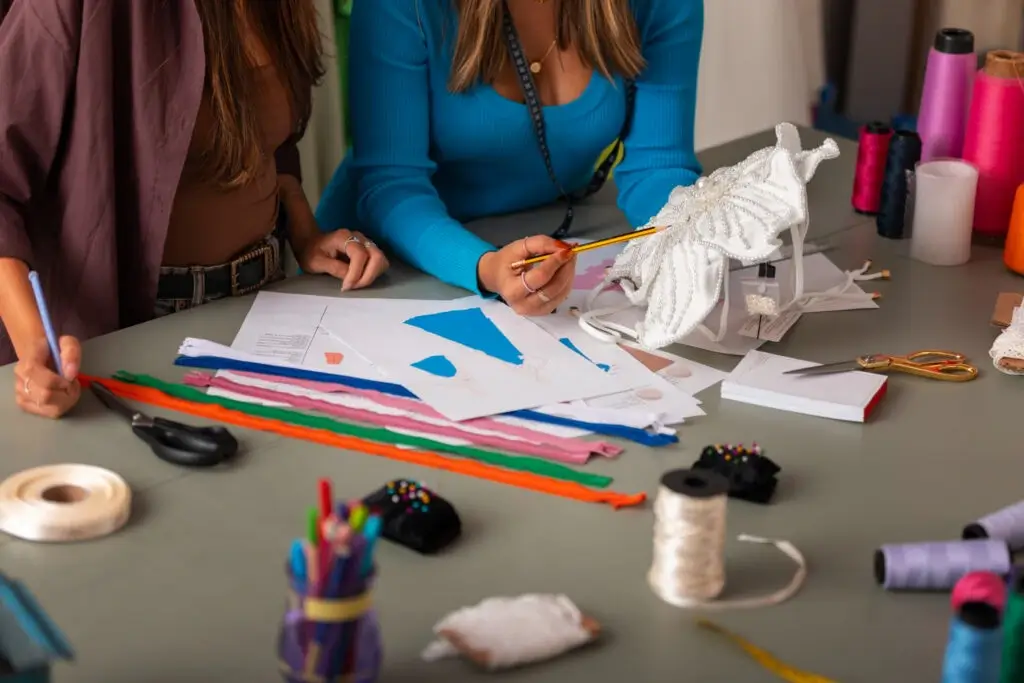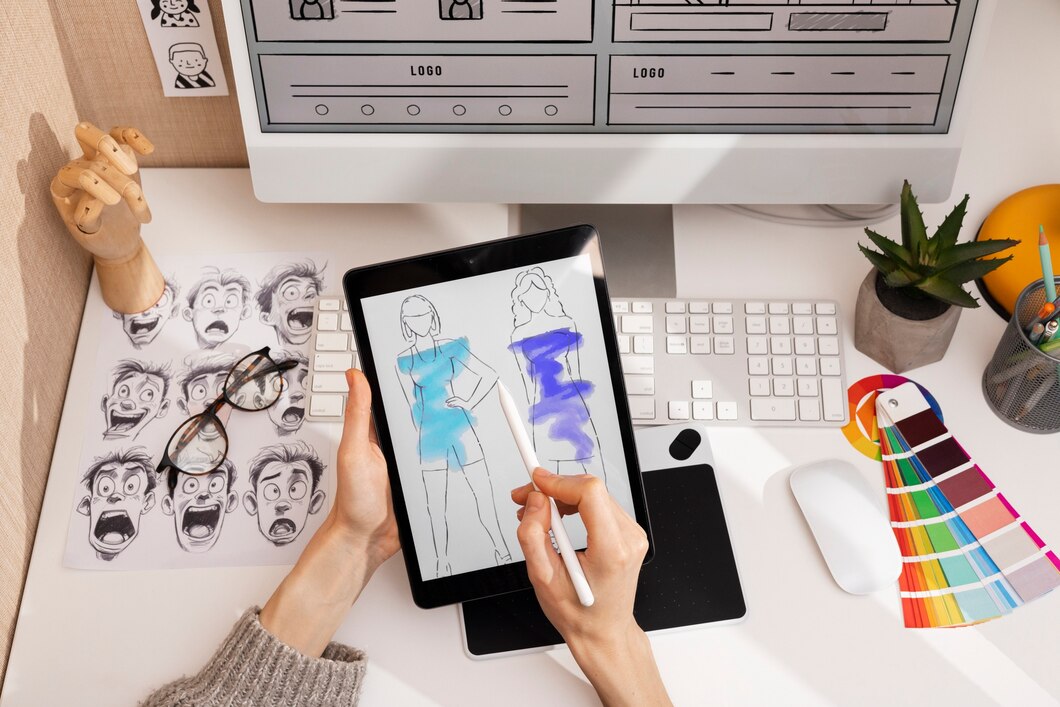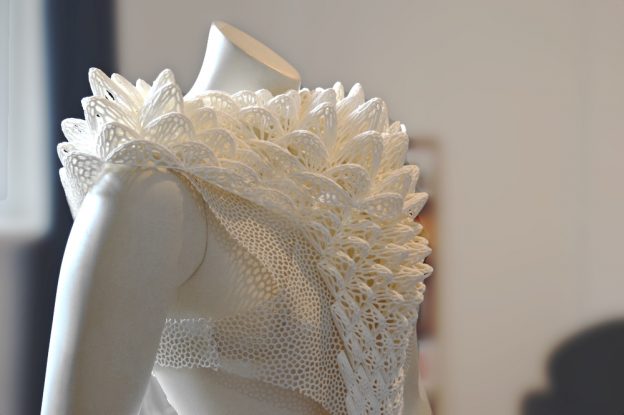3D Printing in Fashion: The Future of Custom Clothing
The fashion industry is changing fast. New tech, like 3D printing, is changing how clothes are made and worn. 3D printing isn’t just a futuristic idea anymore. It’s now a key player in sustainable fashion, customisation, and creative expression. Brands and designers are finding new ways to make custom 3D clothing. So, the future of

The fashion industry is changing fast. New tech, like 3D printing, is changing how clothes are made and worn. 3D printing isn’t just a futuristic idea anymore. It’s now a key player in sustainable fashion, customisation, and creative expression. Brands and designers are finding new ways to make custom 3D clothing. So, the future of fashion tech is getting closer.
Read our blog to explore the evolution of 3D printing in the fashion industry, its benefits, challenges, and what the future holds for this groundbreaking technology.
Understanding 3D Printing in Fashion
3D printing in fashion combines technology and design to create innovative, sustainable, and customisable garments. By using advanced materials and digital fabrication techniques, it pushes the boundaries of traditional clothing production, offering new possibilities for creativity and efficiency.
What is 3D Printing?
3D printing, or additive manufacturing, uses digital designs to build objects one layer at a time. In fashion, this tech helps designers make unique and eco-friendly clothes. Materials used include polymers, resins, and biodegradable compounds.
How is 3D Printing Used in Fashion?
- Garment production: Entire dresses, suits, and accessories can be 3D printed.
- Customisation: Consumers can design personalised outfits tailored to their body shape.
- Sustainable alternatives: 3D printing reduces fabric waste compared to traditional manufacturing.
- Prototyping and experimentation: Designers can test complex patterns without excessive material use.
Designers are using 3D printing in fashion. This helps them explore new creative ideas and work more efficiently.
The Evolution of 3D Printing in Fashion

3D printing in fashion has evolved from experimental couture to a groundbreaking tool for sustainable and customisable design. Advancements in materials and technology have transformed it from rigid structures to flexible, wearable garments, redefining the future of fashion innovation.
Early Experiments & Conceptual Designs
Experimental designers first explored 3D printing in fashion as an avant-garde idea.
- 2000s: Early trials in footwear and accessories showed promise.
- 2010s: Designers like Iris van Herpen gained recognition for 3D-printed haute couture.
- 2018: The first entirely 3D-printed dresses made headlines on runways.
Integration into Mainstream Fashion
As technology advanced, custom 3D clothing became more accessible.
- Nike and Adidas began incorporating 3D printing into footwear production.
- Brands like Danit Peleg pioneered fully 3D-printed fashion collections.
- Luxury fashion houses explored sustainable printing techniques for high-end garments.
The Benefits of 3D Printing in Fashion

3D printing in fashion offers numerous benefits, including reduced waste, customisable designs, and innovative structures that traditional methods can’t achieve. This technology enables sustainable, on-demand production while pushing the boundaries of creativity and functionality in clothing.
Sustainability & Waste Reduction
The fashion industry creates a lot of textile waste. However, 3D printing can help solve this problem.
- Precise material usage reduces excess fabric.
- Recyclable and biodegradable materials lower environmental impact.
- On-demand production minimises overstock and mass production waste.
Personalisation & Customisation
Custom 3D clothing is on the rise. It lets people create garments made just for them.
- Body scanning technology ensures perfect fit and comfort.
- Personalised designs let consumers select colours, textures, and patterns.
- Adaptive fashion caters to people with disabilities or specific needs.
Design Innovation & Creative Freedom
3D printing enables intricate and futuristic designs that are impossible with traditional methods.
- Complex geometric patterns and interwoven structures become achievable.
- Lightweight yet durable materials enhance wearability.
- Rapid prototyping allows designers to experiment with avant-garde concepts.
Challenges & Limitations of 3D-Printed Fashion
3D-printed fashion faces challenges such as limited fabric flexibility, high production costs, and accessibility issues. While it offers sustainability and innovation, scaling production and achieving everyday wearability remain key hurdles for mainstream adoption.
Material Limitations
- Many 3D-printed fabrics lack the softness and breathability of natural fibres.
- Research is ongoing to develop more flexible, skin-friendly materials.
Production Speed & Cost
- 3D printing is slower than mass production by traditional textile manufacturing.
- High-quality printers and materials can be expensive, limiting accessibility.
Consumer Adoption & Practicality
- Some 3D-printed garments remain experimental and impractical for daily wear.
- Brands must balance aesthetics with comfort to appeal to mainstream consumers.
Even with these challenges, 3D printing is quickly advancing in fashion. This points to a bright future.
The Role of 3D Printing in Sustainable Fashion

3D printing transforms sustainable fashion by reducing material waste, enabling on-demand production, and promoting innovative, eco-friendly designs. This technology allows for customisable, zero-waste garments, paving the way for a more responsible and efficient fashion industry.
Eco-Friendly Materials & Circular Fashion
3D printing is making fashion more sustainable as it becomes a priority.
- Bio-based filaments made from algae, cornstarch, and fungi are reducing reliance on plastics.
- Upcycled and recycled materials are being used to create new garments from waste.
- Closed-loop systems aim to repurpose 3D-printed clothing at the end of its life cycle.
Reducing Carbon Footprint
- On-demand production means fewer emissions from transportation and warehousing.
- Localised manufacturing eliminates the need for global supply chains.
- Energy-efficient printers are being developed to further reduce environmental impact.
The Future of Custom 3D Clothing
Custom 3D clothing is set to revolutionise fashion, offering personalised, on-demand designs that reduce waste and enhance fit. With advancements in digital tailoring and 3D printing, the future of fashion is moving toward sustainability, innovation, and true individuality.
Advancements in 3D Printing Materials
Future innovations will create more comfortable, wearable fabrics for custom 3D clothing.
- Flexible and breathable polymers will mimic traditional textiles.
- Smart textiles will integrate sensors for adaptive fashion.
- Self-healing fabrics will enhance durability and sustainability.
Integration with AI & Digital Fashion
- AI-driven design tools will allow users to create unique garments effortlessly.
- Augmented reality (AR) fitting rooms will enable virtual try-ons before printing.
- NFT fashion collections will merge digital and physical clothing in the metaverse.
Affordable 3D-Printed Fashion for Everyone
As costs decline, 3D-printed fashion will become more accessible.
- Fast fashion brands may adopt printing as a sustainable alternative.
- Customisable home printers could allow consumers to print clothing on demand.
- Rental and resale platforms may embrace on-the-go garment printing.
The future of fashion tech focuses on making clothes with precision. It aims for minimal waste and full personalisation.
Brands Leading the 3D Printing Fashion Revolution
Major fashion brands are embracing 3D printing to revolutionise design, sustainability, and customisation. Companies like Adidas, Balenciaga, and Iris van Herpen are pushing the boundaries with innovative, eco-friendly, and futuristic creations.
High-Fashion & Couture Designers
- Iris van Herpen: Pioneering 3D-printed haute couture with futuristic aesthetics.
- ThreeASFOUR: Integrating 3D-printed elements into luxury fashion collections.
- Ganit Goldstein: It specialises in 3D-printed textiles with cultural influences.
Sportswear & Footwear Brands
- Nike: Innovating with 3D-printed soles and Flyprint technology.
- Adidas: Introducing 3D-printed midsoles with its Futurecraft line.
- New Balance: Experimenting with 3D-printed performance footwear.
Sustainable & Experimental Brands
- Danit Peleg: Creating fully 3D-printed garments for everyday wear.
- Zer Collection: Focusing on zero-waste fashion with 3D-printed elements.
- Stratasys: Partnering with fashion designers to push technological boundaries.
These brands are shaping how 3D printing in fashion will evolve over the next decade.
How 3D Printing is Shaping the Future of Fashion
3D printing is changing fashion. It promotes sustainability, customisation, and innovation. Challenges exist, but custom 3D clothing can change high fashion and everyday wear.
Technology is changing fast. The future of fashion technology will combine creativity, efficiency, and personal expression. This shift offers endless possibilities for designers and consumers.
Would you wear 3D-printed fashion? Share your thoughts in the comments!